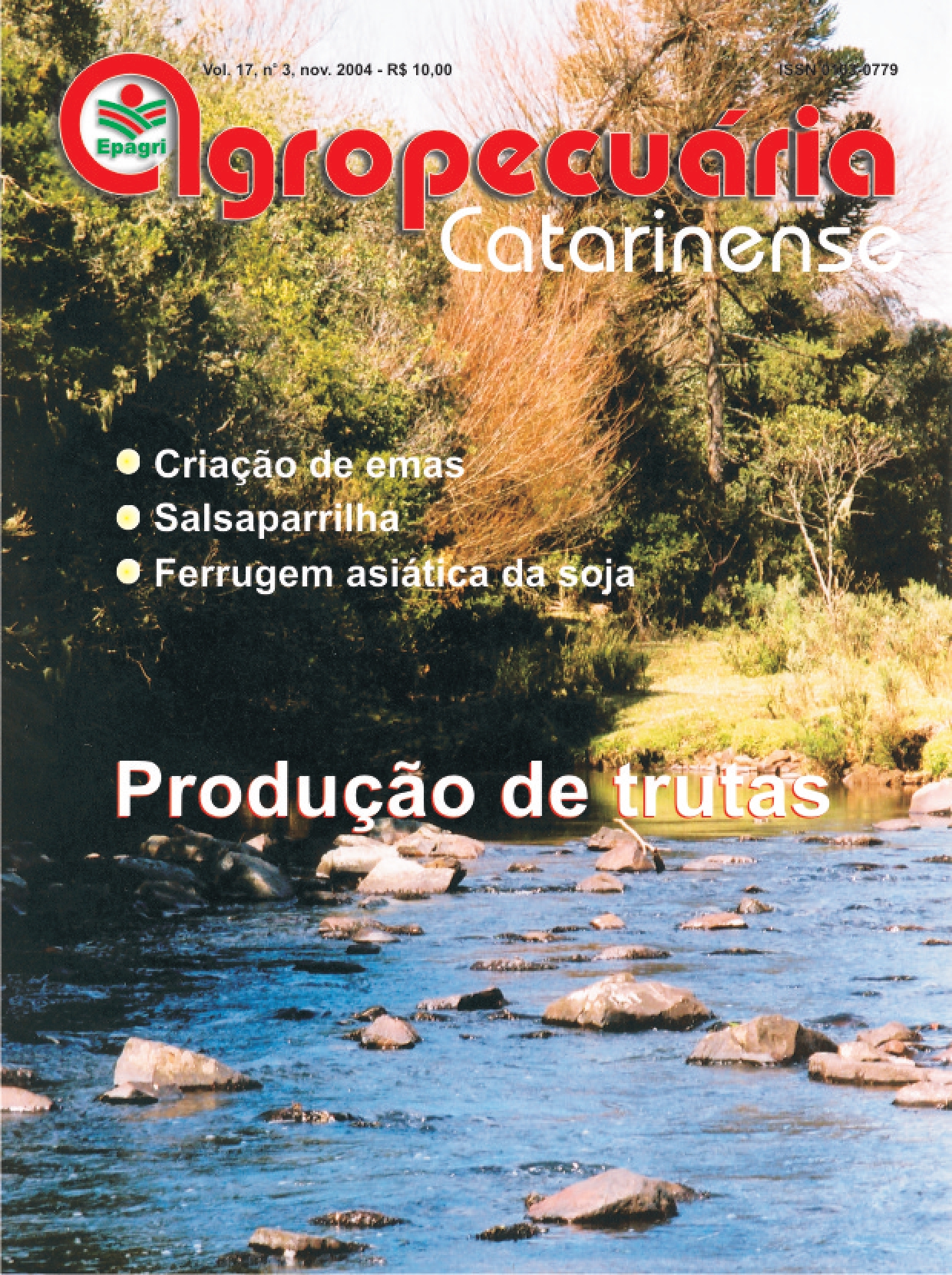Severity and control of asian rust in soybean crop
Keywords:
Glycine max, fungicides, epidemiology, yield, yield componentsAbstract
Asian rust, caused by Phakopsora pachyrhizi Sydow & Syd, was identified during the growing season
2000/01, in Paraná State, Brazil. Nowadays, it is spread in large extent on the brazilian territory. This disease has caused high losses in soybean yield, specially in early infection. In this work it was evaluated the disease severity,
yield losses and efficiency of fungicides. The fungicides trifloxistrobina + ciproconazol + mineral oil Assist (56,25 + 24g i.a./ha + 0,125% v/v) applied at R5.1 phenological stage and tebuconazole (120g i.a./ha) applied at R5.3 stage, were efficient to control asian rust.
Metrics
Downloads
Published
How to Cite
Issue
Section
License
Copyright (c) 2004 Agropecuaria catarinense

This work is licensed under a Creative Commons Attribution 4.0 International License.



